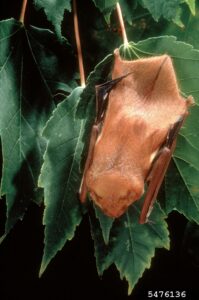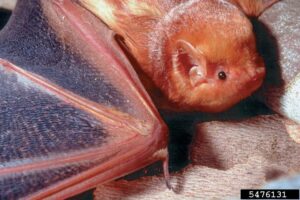Going Batty for Bat Week?
go.ncsu.edu/readext?966822
en Español / em Português
El inglés es el idioma de control de esta página. En la medida en que haya algún conflicto entre la traducción al inglés y la traducción, el inglés prevalece.
Al hacer clic en el enlace de traducción se activa un servicio de traducción gratuito para convertir la página al español. Al igual que con cualquier traducción por Internet, la conversión no es sensible al contexto y puede que no traduzca el texto en su significado original. NC State Extension no garantiza la exactitud del texto traducido. Por favor, tenga en cuenta que algunas aplicaciones y/o servicios pueden no funcionar como se espera cuando se traducen.
Português
Inglês é o idioma de controle desta página. Na medida que haja algum conflito entre o texto original em Inglês e a tradução, o Inglês prevalece.
Ao clicar no link de tradução, um serviço gratuito de tradução será ativado para converter a página para o Português. Como em qualquer tradução pela internet, a conversão não é sensivel ao contexto e pode não ocorrer a tradução para o significado orginal. O serviço de Extensão da Carolina do Norte (NC State Extension) não garante a exatidão do texto traduzido. Por favor, observe que algumas funções ou serviços podem não funcionar como esperado após a tradução.
English
English is the controlling language of this page. To the extent there is any conflict between the English text and the translation, English controls.
Clicking on the translation link activates a free translation service to convert the page to Spanish. As with any Internet translation, the conversion is not context-sensitive and may not translate the text to its original meaning. NC State Extension does not guarantee the accuracy of the translated text. Please note that some applications and/or services may not function as expected when translated.
Collapse ▲Did you know that we have an International Bat Week? Well, we do and it’s this week (October 24-31)! Bats range in size from 29-33 mm (Bumblebee Bat) to those having a wingspan of up to 6 feet (Giant Golden-crowned Flying Fox). There are over 1,400 species of bats in the world. Bats live 4 to 16 years on average according to species with some living well over 30 years.
Why on Earth would we celebrate bats on an international level? I mean, I would think this is something that would coincide with Halloween. All joking aside, bats are performing some incredible environmental services for us daily! On top of this fact, they are also incredibly important to medical research. Did I mention that bats make up 25% of all species of mammals on Earth?

USDA Forest Service – Southern Research Station , USDA Forest Service, SRS, Bugwood.org
Bats are invested when it comes to environmental services for us humans! They are incredible consumers of nocturnal insects as the only major predator of night-flying insects. That’s right, according to one Extension Publication, the service they provide is estimated to contribute over $3.5 billion to U.S. agriculture. A single Big Brown Bat can consume between 3,000 and 7,000 mosquitoes in a single night! They also consume moths which lay eggs that turn into hungry caterpillars such as the corn ear worm. I needed more bats around my house the last few nights! In addition to providing insect termination/decimation services, bats are also major pollinators of our plants especially in tropical regions. Plants such as mango, banana, and even agave are pollinated by bats. Plants having nocturnal flowers that are typically pale in color, large, and bell-shaped are often pollinated by bats. In all, there are over 500 plant species that rely on bats for pollination services.
What is this about medical research? Bats use echolocation to communicate and hunt. Studying bat’s ability to use echolocation can help those of us that are visually impaired. According to one scientific article, bats are being used to treat 42 medical conditions in 37 countries and territories (Global Medicinal Use of Bats: A Systematic and Social Media Review, Tackett et al., 2022).

Eastern Red Bat USDA Forest Service – Southern Research Station , USDA Forest Service, SRS, Bugwood.org
What can you do to help protect bats around your home? First, it is important to seal up your home to ensure that bats do not enter to make their home in your home! Next, there are some great articles out there for building and locating bat boxes. Chris Moorman, our campus wildlife specialist has a great NC Extension publication that gives quite a bit of background and a diagram on how to build a bat box. Bat Conservation International is another great site to learn about bats.
If you are interested in more information on bats, give me call! We will have an Extension Master Gardener℠ Volunteer-led class coming up on Saturday, November 4th. Please call the office (252)946-0111 or register online. We also have our Christmas Wreath Fundraiser happening right now. Wreath orders are due next Tuesday, November 1 st! Visit the Beaufort County Master Gardeners’ Facebook page or our N.C. Cooperative Extension, Beaufort County Center website for more information.



